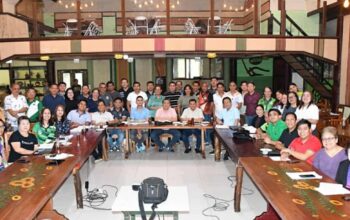
UBAY’s bid to become a component city of Bohol stalls as the Regional Development Council (RDC) found one thing wanting in its conversion requirements: its locally generated annual income is still below the standard.
As to the requisites for the conversion of Ubay into a city, Republic Act (RA) 11683, which amended section 450 of RA 7160 as amended by RA 9009 provided for the requisites for the conversion of the towns into component cities, noted that Ubay still fails in it locally generated average annual income.
The law says, a municipality with a locally generated average annual income of at least P100 million for the last consecutive two years based on the 2000 constant prices, as certified by the Department of Finance.
Ubay, in 2019 had only 39,594,395.00, lower at 36,089,171.55 in 2020 or the pandemic year and 35,616,053.62 in 2021.
And with that, the RDC through its Public Financial Management Regional Interagency Team (PFM-RIAT) has offered Ubay its willingness to provide technical assistance to the town to improve its local-revenue raising capabilities.
In 2022, the Municipal Development Council (MDC) of Ubay crafted MDC Resolution No. 012-2022, earnestly requesting the RDC and the Bohol Provincial Development Council Bohol Governor Erico Aristotle Aumentado to favorably endorse to the 19th Congress to prioritize and support House Bill No. 5203.
Earlier also, Bohol Congressional District II representative Maria Vanessa C. Aumentado elevated the house bill seeking for the conversion of Ubay into a component city, and would be called as the Science City of Ubay.
According to Congresswoman Aumentado, Ubay has become a first class town in Bohol, and as to the 2020 census, the town’s 44 barangays has already a combined population of 85,799, which makes the town the largest and the most populated town in Bohol.
The town has approximately 335 square kilometers (292.05 hectares), and claims to be the most progressive town in terms of income and livelihood opportunities.
In RA 9009 which provided for the requisites for the conversion of a town into a component city, it says it had to have a locally generated average annual income of P100M, a contiguous territory of at least 100 square kilometers as certified by the Land Management Bureau, a population of not less than 150,000 as certified by the Philippine Statistics Authority.
For the determination of annual income, in the conversion if a town into a component city, locally generated income is real property tax (General Fund), tax on businesses, other taxes, regulatory fees like permits and licenses, service and user charges (Service Incomes), receipts from economic enterprises, interest incomes plus shares from PEZA.
To this the RDC said based on the conditions for the conversion of Ubay into a component city, the town has not reached the required income to qualify for conversion into a component city.
As such, the RDC Development Administration Committee through its PFM-RIAT has offered its technical assistance to help the town improve its local revenue generation capabilities and hit the final requirement before the town can become a city. (rahc/PIA-7/Bohol)


